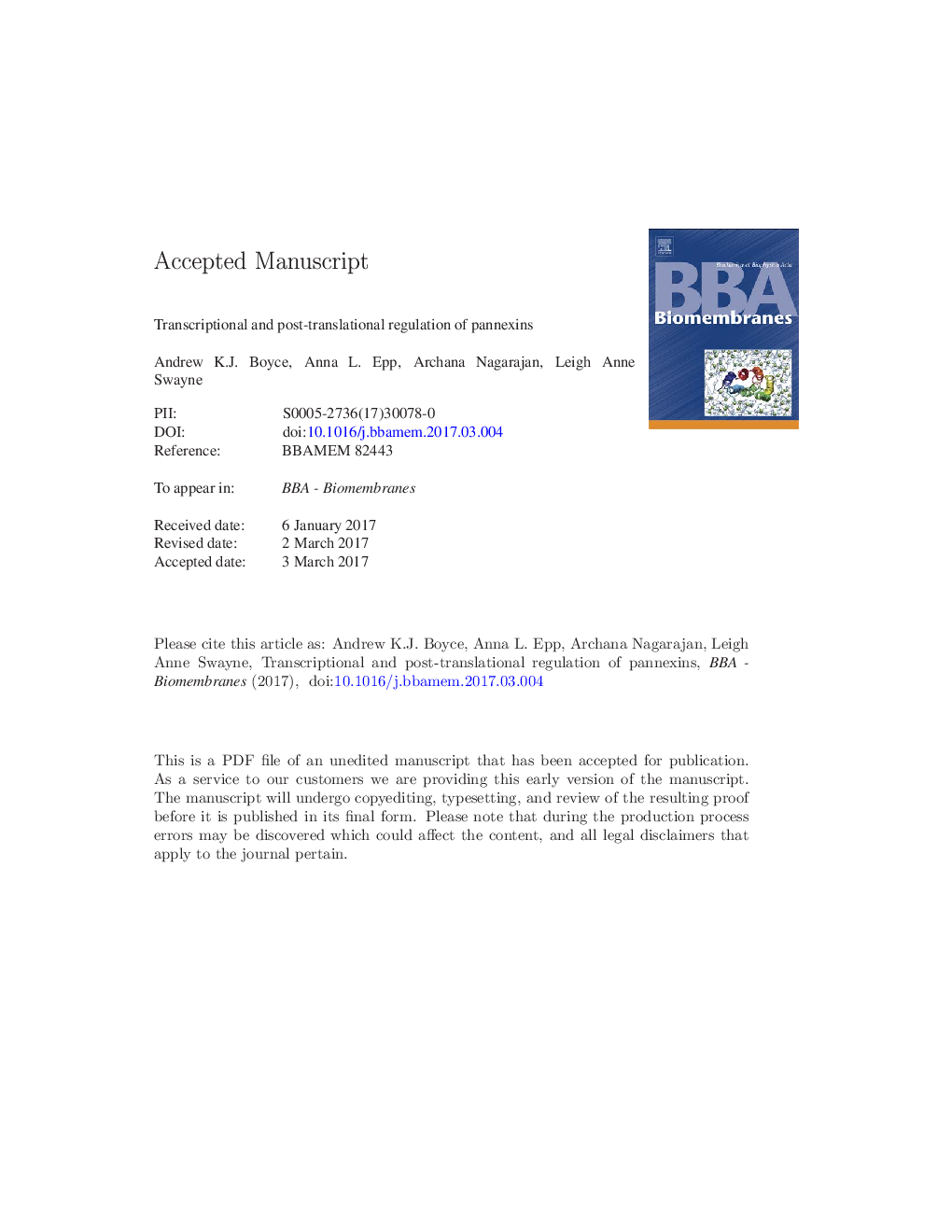| Article ID | Journal | Published Year | Pages | File Type |
|---|---|---|---|---|
| 8299796 | Biochimica et Biophysica Acta (BBA) - Biomembranes | 2018 | 43 Pages |
Abstract
Pannexins are a 3-membered family of proteins that form large pore ion and metabolite channels in vertebrates. The impact of pannexins on vertebrate biology is intricately tied to where and when they are expressed, and how they are modified, once produced. The purpose of this review is therefore to outline our current understanding of transcriptional and post-translational regulation of pannexins. First, we briefly summarize their discovery and characteristics. Next, we describe several aspects of transcriptional regulation, including cell and tissue-specific expression, dynamic expression over development and disease, as well as new insights into the underlying molecular machinery involved. Following this, we delve into the role of post-translational modifications in the regulation of trafficking and channel properties, highlighting important work on glycosylation, phosphorylation, S-nitrosylation and proteolytic cleavage. Embedded throughout, we also highlight important knowledge gaps and avenues of future research. This article is part of a Special Issue entitled: Gap Junction Proteins edited by Jean Claude Herve.
Keywords
SFKS-nitrosylationPanx1N2aICLNeuro2aPKGP2X7RCBXNMDARN-methyl-d-asparate receptorPTMC-terminusSrc family kinaseAdenosine TriphosphateATPpost-translational modificationProteolytic cleavageextracellular loopIntracellular looptransmembrane domainCNScentral nervous systemPhosphorylationPromoter regulationNitric oxidePanxpannexinprotein kinase GSingle nucleotide polymorphismSNPcarbenoxolonecarboxyl-terminusGlycosylation
Related Topics
Life Sciences
Biochemistry, Genetics and Molecular Biology
Biochemistry
Authors
Andrew K.J. Boyce, Anna L. Epp, Archana Nagarajan, Leigh Anne Swayne,
